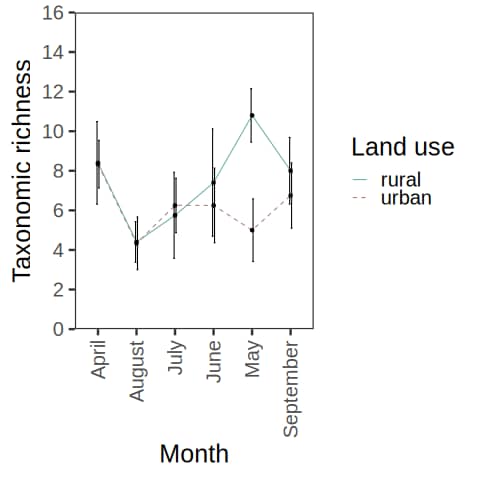Matthew J. Lundquist, PhD
Email: mattlundquist@mlundquist
LinkedIn: mattlundquist
Github: lundquist-ecology-lab

About
As a college professor of biology and ecology with extensive experience in research design and advanced statistical techniques, I have a proven track record of success in both academia and industry. I have designed numerous research studies utilizing a wide range of techniques, including generalized linear models, mixed models, and dissimilarity analysis. My expertise extends to various software and programming languaged, including R, Python, SQL, and QGIS, which I have used to analyze and interpret complex data sets. I also have extensive experience building reports and websites using HTML, CSS, Markdown, and LaTeX. Furthermore, I have experience teaching the concepts of statistics and data science in the classroom and have mentored several undergraduate researchers. My strong analytical and problem-solving skills, coupled with my ability to effectively communicate and collaborate with others, make me an ideal candidate for any data science, research-oriented position.
Select projects
Urban aquatic insect biodiversity
Urban insect data collected from Binghamton, NY in 2014 and 2015 including R code examples using generalized linear mixed modeling to determine effect of group membership (urban, rural, or reference) and other continuous predictive variables on response variable (e.g. biodiversity). Utilizes linear mixed modeling, linear modeling, and dissimilarity analysis.

Urban aquatic insect nutrient content
Urban insect biomass and nutrient content data collected from Binghamton, NY with data, and R code examples. Utilizes generalized linear mixed modeling and includes an example of how to use decision tree modeling to predict group membership (urban, rural, and reference stream sites) based on a suite of predictive variables. Companion to study to insect biodiversity project.

Tree pit biodiversity in tree pits in New York City
Analyses of New York City tree pit biodiversity over space within the borough of Manhattan. Utilizes generalized linear modeling, dissimilarity analysis, and rank-abundance to determine relatedness between communities of terrestrial insect species within and between urban neighborhoods.

Analysis of distribution of green spaces in New York City
Utilizing GIS (QGIS) technology and R to analyze the relationship between subway stations and green area in New York City boroughs using Analysis of Variance (ANOVA).

More projects and example code in R, Python, and SQL as well as analyses can be found on my Github page.